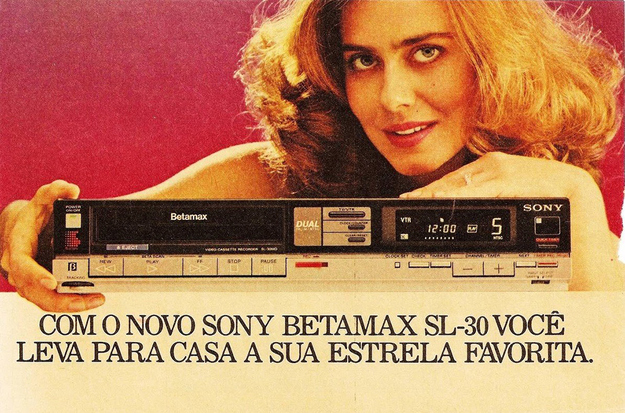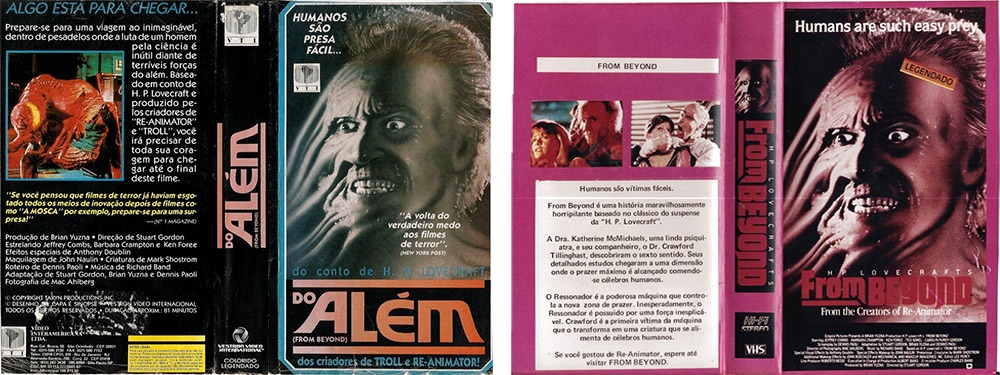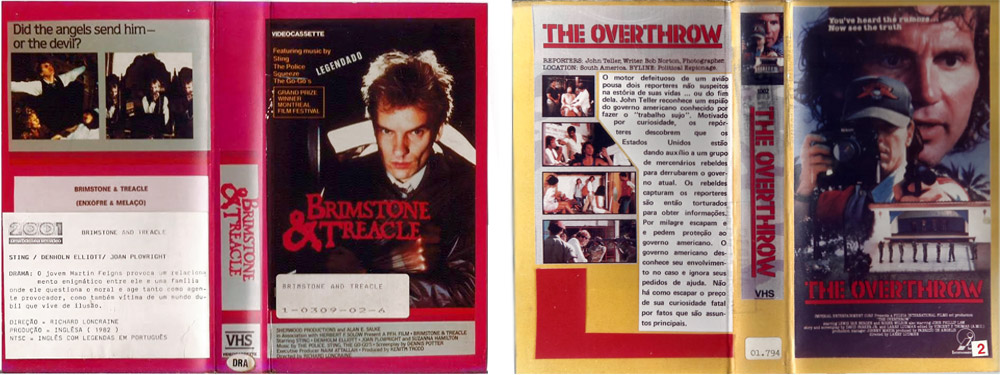Brazil, 80s & 90s
by Pedro Mizukami, researcher,
co-coordinator of the Brazilian components of
the “Media Piracy in Emerging Economies” project
INTRODUCTION
Both video clubs/stores and video game consoles were affected by Brazilian industrial policy during the 1980s and the import substitution policies that were adopted at the time. Several items were included in the package, but mostly it was about closing the Brazilian market and making it very hard for imports to reach the Brazilian territory in order to stimulate local industries. This was the main trend in Brazilian industrial policy during that time. As a result, contraband, piracy, and unlicensed hardware, in the case of video game consoles, were commonplace.
POLITICAL CONTEXT
Video became a big thing in Brazil during the 80s. I remember how hard it was to purchase a VCR video player in Brazil when I was growing up. It was very expensive. So it took a lot of time for families to save enough money to purchase a videocassette player in Brazil, and, for the most part, only families that were well off could afford it.
EARLY FAN COMMUNITIES
The first Brazilian videocassette player was produced in 1982, so this year can be used in a timeline as the beginning of Brazilian video, though VCRs were imported into Brazil before that. Since prices for VCRs produced in Brazil were very high, most families would purchase cheaper imported machines, mostly from Paraguay. The price difference was so great that people would go to Paraguay, buy videocassette players, and resell them into the Brazilian market. The market started to be populated by these machines, but there was actually no home video market to supply VHS tapes containing movies. It meant that even if you had access to a videocassette player, there was still the issue of how to find the content to play in it. So people began to organize themselves into video clubs. Each video club would of course operate by different rules, but typically you would pay a monthly fee for being a member, and sometimes you would be required to contribute a few new titles for the archives. Mostly these were VHS tapes that were purchased abroad, even though importing them was actually illegal. The import substitution policies I mentioned before required them to be produced in Brazil. A member of a video club would have access to the entire archive of the video club, so these became hubs for the import and distribution of movies during the early years of the Brazilian video market. As you can imagine, this involved piracy because it was necessary to acquire, duplicate, and subtitle the tape, so these clubs can be thought of as a sort of early fan subcommunities.
VIDEO CLUBS/STORES
The video clubs progressively transitioned into the video rental market. Rental stores began to appear where you could actually rent movies, so you would not have to contribute new movies and so on. You could just go there and pay a fee for each of the movies that you rented. According to an estimate from 1987 (this is an industry estimate, so we can question its accuracy), about 80% of the archives in Brazilian video stores around 1987 were pirated. There was actually no official market that could supply the home video market with the number of titles that it needed.
LEGAL DISTRIBUTION
Getting a video tape legally distributed in Brazil involved a series of bureaucratic steps. Let’s suppose that you were a firm licensed to distribute a movie from Warner Bros. in Brazil. You would have to get authorization from Concine (Concine was the government body that supervised the entire film industry in Brazil), you would have to register with them, you would have to prove that you have a license to distribute the video and you would have to acquire a stamp, a small sticker that would be put on the videotape. The stamp was usually what people used to distinguish between pirated video and legitimate, official video. It was printed by the government and attached to the tapes. The legal tapes would also, of course, have professionally produced covers and packaging, which was certainly not the case with pirated videotapes.
If you look at the Brazilian pirate market now, there are varying degrees of how professionally produced the covers are, but at that time a sticker was typed on a typewriter with the title of the movie, maybe with a brief synopsis, and the cover would probably include the name of the video club or the video rental store. In terms of aesthetics, it wasn’t very well produced. These were the main factors that were used to distinguish between a pirated videotape and an original, licensed one. There was no big conversation around copyright then; it was mainly a question of whether the government authorized distribution of the video on Brazilian territory or whether there was a sticker on the tape. If there was no sticker, it meant that this was either a pirated tape or an “alternative” tape. “Alternative” was a euphemism that was used in order to market these tapes; there wasn’t really a stigma attached to the word “piracy,” but it did, of course, link people to the idea of illegality.
CRACKDOWN
In 1987 distributors, representatives of big studios, and film producers started to organize themselves in Brazil. They began to pressure the government and managed to crack down on the pirate video market. From 1987 to 1989 there were several crackdowns on numerous video stores and video clubs. These were very effective. I remember when growing up that one week you would have access to the entire range of film production in the world, and after the crackdown you would be restricted to legally distributed tapes, which of course, only represented the major blockbusters. And even so, the market was under-served, both due to the bureaucratic hindrances involved with getting the sticker from the government, and the approach of the distributers themselves, who preferred to serve the market with the minimum common denominator in terms of content. So you can imagine what it was like for a 10-year-old boy in the countryside near São Paulo, going to the video store in order to rent a movie, and going from a whole universe of productions to a very small number of major American blockbusters or major European productions. From one day to the next, it was as if 80% of the catalogue was down, and with it a lot of content that you wouldn’t be able to find elsewhere, not in theatres, and not on TV. It was a major drought in terms of access to content in Brazil. The crackdown on Brazilian video stores could be likened to the burning the Library of Alexandria or a situation where 80% of the content on peer-to-peer file sharing websites disappeared after a successful enforcement attack from the major motion picture organizations. It took from 1990 to the late 90s for the market to actually meet the demand for less mainstream titles.
thepiratebook.net - 2015




One thought on “PIRATE VIDEO CLUBS IN BRAZIL”
Comments are closed.